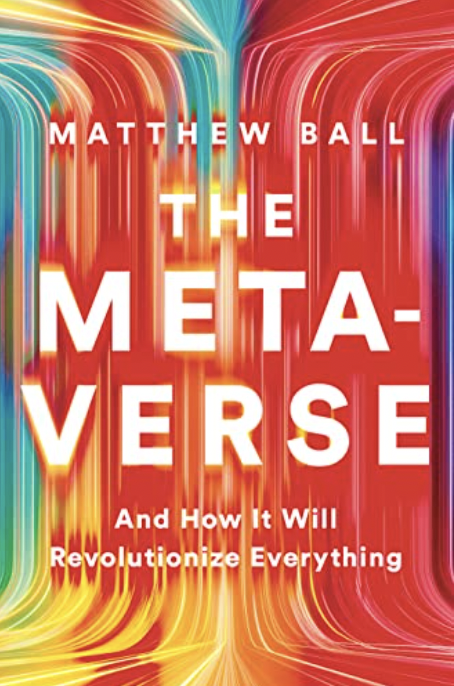
Peek into the future: the Next generation web plaform


Disney CEO Bob Chapek has been one of the most vocal entertainment industry chiefs about the possibilities of Metaverse as a part of the canvas for creatives, which first emerged as a concept in the imagination of science fiction writers. Although everybody seems to be talking about Metaverse, no one can agree on what the word means exactly, if it will work and what difference it might make even if it does. The Burbank entertainment company has already hired people to work toward this idea of “nest generation storytelling” where audiences connect with what they’re doing on the streaming service Disney+.
Meta is hailed from the name change from Facebook and Microsoft as the next-generation internet platform that can enable users to interact in parallel virtual worlds, although some critics say it is just an overhyped technological bubble that will soon pop.
The term Metaverse was invented by the author Neal Stephenson in Snow Crash (1992), a cult novel in Silicon Valley, which describes a persistent, virtual world where millions of human-control-led avatars interact on a 3D street, known as the Broadway, or the Champs-Elysees, of the metaverse. Its depictions in pop culture continued through William Gibson’s conception of cyberspace in Neuromancer, the Wachowskis of Matrix films, and the novel and movie “ready player one”.
Mathew Ball, a leading theorist of the metaverse, venture capitalist, and previously head of the strategy for Amazon Studios, explains how Metaverse could operate in practice and explores how it might turn out to be a lot more exciting and beneficial invention than the miserabilists imagine, so long we help shape its evolution. Ball’s book serves as a comprehensive guide to every aspect of the metaverse, from its technical underpinnings to its societal responsibilities. Metaverse is set to become the successor platform to the mobile internet that has defined out the digital world for the past two decades, ever since Apple brought out iPhones, promising to revolutionise every industry from finance to healthcare, entertainment, and sex work. “A massively scaled and interoperable network of real-time rendered 3D virtual worlds that can be experienced synchronously and persistently by an effectively unlimited number of users with an individual sense of presence, and with continuity of data, such as identity, history entitlements, object communications and payments”. The big companies dominate the metaverse turning into a “corporate internet”. The promise is that the metaverse can enable people to connect in far more meaningful ways and create massive, but unimagined economic opportunities.
Ball also throws some light into what the metaverse is not and disentangles some of the futuristic jargon. Is the Metaverse the same thing as Web3? Are blockchains, or decentralized digital ledgers required to build a metaverse?
A game like Roblox and Fortnite as prototypes for the metaverse have gotten certain people used to this idea of experiencing virtual worlds and buying virtual goods. It is like comparing Yahoo or AOL in the 90s to the internet today. The applications of 3-D simulation and virtual presence in education in how we use it to operate a building or design to the infrastructure and how it changes society or consumer experiences. How TikTok would impact the bIllboard charts, and a college hotshot would become the world’s largest identity system in Facebook, or Snapchat, born of ephemeral sexting would become another one of the world’s largest communication platforms. Imagine what exactly is life in 2032 in the metaverse. Jensen Huang, the founder, and CEO of Nvidia, one of the most valuable companies globally, has said that USD, a file format created by Pixar in 2015, is the HTML of the metaverse. The most successful seasons of Fortnite are the Star Wars and Marvel seasons. The metaverse is another medium for expression, exploration, creation, and storytelling.
Tim Sweeney the founder of Epic Games said “Metaverse is going to be far more pervasive and powerful than anything else. If one central company gains control of this, they will become more powerful than any government and be a God on Earth”. Epic Games with hundreds of millions of users, operating services, underlying game engines, the content companies to produce new interactive experiences of their own. The leader in the arcade era Atari, and Bandai Namco did not lead in console, and the leaders in console platforms and publishing weren’t leaders in PC gaming. Neither were leaders in mobile nor those players who built the Roblox and Minecraft that are now the most popular games on Earth. The Metaverse is described as a successor to the internet.
The Chinese communist party has already sniffed a threat to its authority and denounced metaverse as a “grand and illusionary concept” that will come back to bite its creators.
“The concept history and future of the metaverse are all intimately tied to gaming,” Ball writes.
However, the main engines of the metaverse’s development are likely to be two giant corporations, Meta and Microsoft, which has become massive player in the gaming world, Meta acquired the pioneering VT company Oculus for $2.3bn in 2014 and has been leading the charge in deploying the technology. Meta is now investing more than $10bn a year in the metaverse. Meanwhile, Microsoft has also been betting big on expanding HoloLens technology. One other player is also the US Army, which in 2021 signed a $22bn contract with Microsoft to buy up to 120, 000 customised HoloLens devices over the next decade.
The legions of developers, entrepreneurs, consumers, governments, and regulators must all now do their bit to design a metaverse worth creating, with the arrival of Metaverse by the end of this decade.
The Metaverse: And How it Will Revolutionize Everything by Matthew Ball, Liveright £22, 352 pages.
